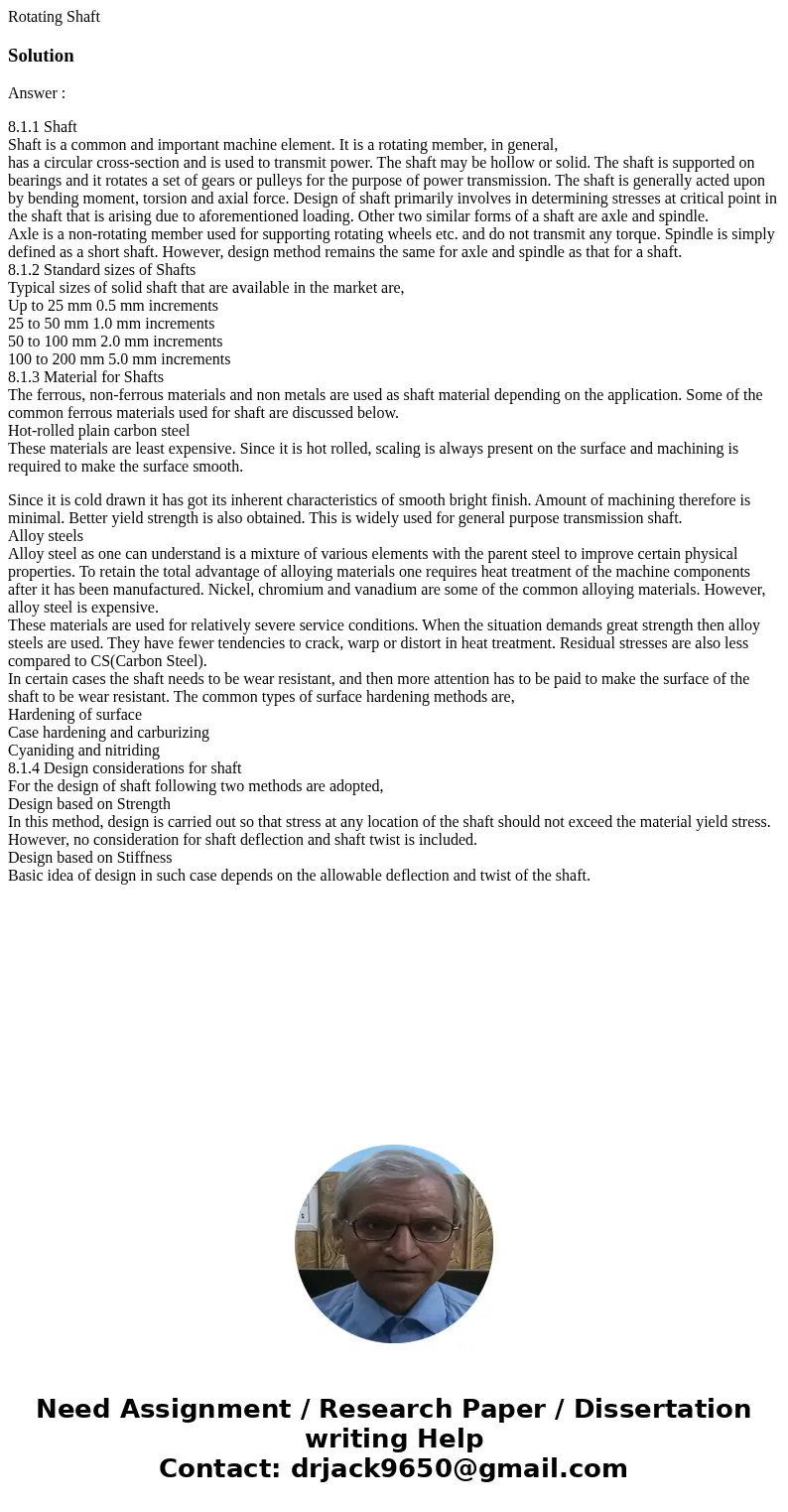Rotating ShaftSolutionAnswer 811 Shaft Shaft is a common an
Rotating Shaft
Solution
Answer :
8.1.1 Shaft
Shaft is a common and important machine element. It is a rotating member, in general,
has a circular cross-section and is used to transmit power. The shaft may be hollow or solid. The shaft is supported on bearings and it rotates a set of gears or pulleys for the purpose of power transmission. The shaft is generally acted upon by bending moment, torsion and axial force. Design of shaft primarily involves in determining stresses at critical point in the shaft that is arising due to aforementioned loading. Other two similar forms of a shaft are axle and spindle.
Axle is a non-rotating member used for supporting rotating wheels etc. and do not transmit any torque. Spindle is simply defined as a short shaft. However, design method remains the same for axle and spindle as that for a shaft.
8.1.2 Standard sizes of Shafts
Typical sizes of solid shaft that are available in the market are,
Up to 25 mm 0.5 mm increments
25 to 50 mm 1.0 mm increments
50 to 100 mm 2.0 mm increments
100 to 200 mm 5.0 mm increments
8.1.3 Material for Shafts
The ferrous, non-ferrous materials and non metals are used as shaft material depending on the application. Some of the common ferrous materials used for shaft are discussed below.
Hot-rolled plain carbon steel
These materials are least expensive. Since it is hot rolled, scaling is always present on the surface and machining is required to make the surface smooth.
Since it is cold drawn it has got its inherent characteristics of smooth bright finish. Amount of machining therefore is minimal. Better yield strength is also obtained. This is widely used for general purpose transmission shaft.
Alloy steels
Alloy steel as one can understand is a mixture of various elements with the parent steel to improve certain physical properties. To retain the total advantage of alloying materials one requires heat treatment of the machine components after it has been manufactured. Nickel, chromium and vanadium are some of the common alloying materials. However, alloy steel is expensive.
These materials are used for relatively severe service conditions. When the situation demands great strength then alloy steels are used. They have fewer tendencies to crack, warp or distort in heat treatment. Residual stresses are also less compared to CS(Carbon Steel).
In certain cases the shaft needs to be wear resistant, and then more attention has to be paid to make the surface of the shaft to be wear resistant. The common types of surface hardening methods are,
Hardening of surface
Case hardening and carburizing
Cyaniding and nitriding
8.1.4 Design considerations for shaft
For the design of shaft following two methods are adopted,
Design based on Strength
In this method, design is carried out so that stress at any location of the shaft should not exceed the material yield stress. However, no consideration for shaft deflection and shaft twist is included.
Design based on Stiffness
Basic idea of design in such case depends on the allowable deflection and twist of the shaft.

 Homework Sourse
Homework Sourse